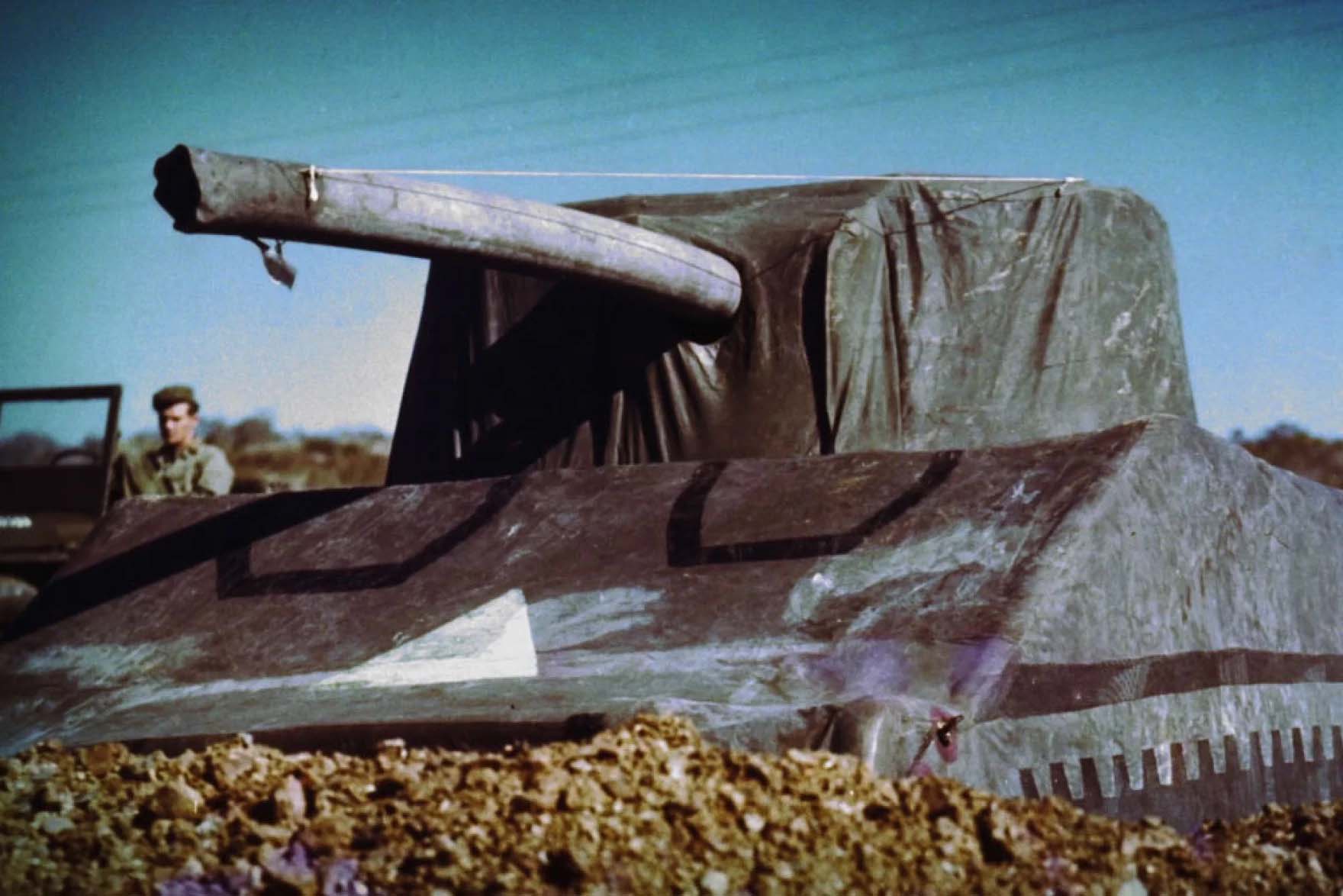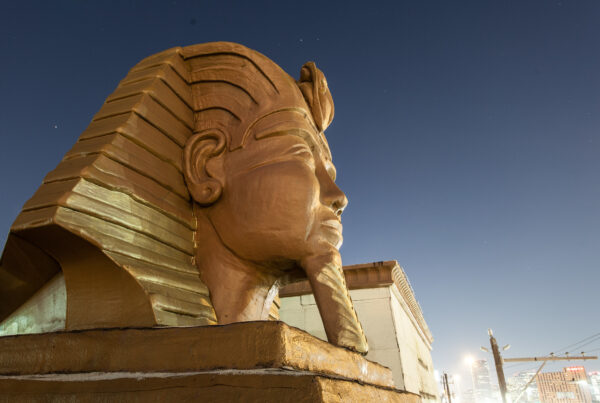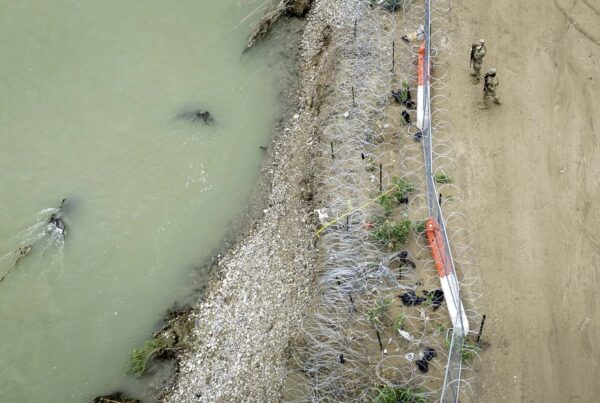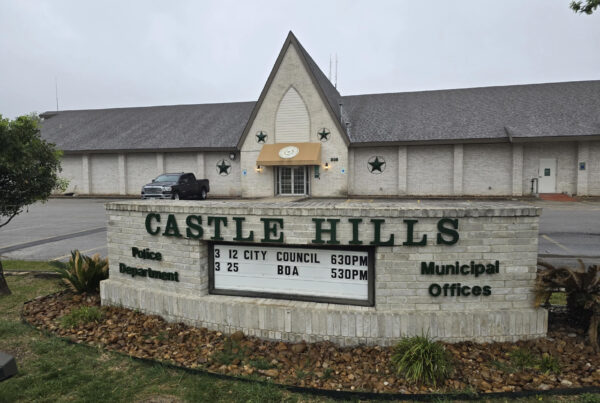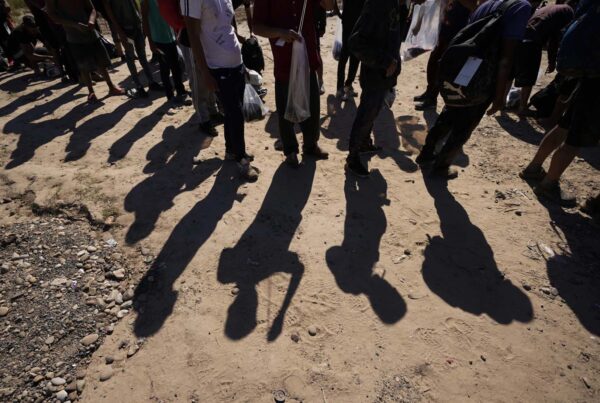From the American Homefront Project:
Congress this week will bestow its highest civilian honor – the Congressional Gold Medal – on men who have been called combat con artists.
They’re the soldiers of a long-secret unit known as the “Ghost Army” that is believed to have saved thousands of American lives during World War II with a ground-breaking approach to battlefield deception.
Their story comes complete with a cast of seeming military misfits like Bill Blass — who later became a fashion design superstar — and the abstract artist Ellsworth Kelly.
And their tale plays like a good caper movie, with methods that included deploying formations of inflatable tanks, impersonating American generals, and drunkenly spreading misinformation in bars across wartime Europe.
But their work was also deadly serious and effective.
“The Ghost Army was unique in that they integrated all these techniques into a process that was highly believable,” said Ed Burley, a retired brigadier general and former senior commander in modern U.S. Army psychological operations, which still uses the multi-media approach the Ghost Army developed.
Eleven-hundred men belonged to the 23rd Headquarters Special Troops. At key points during the war, they successfully fooled the Germans into believing that they were actually a different, more lethal American unit. That allowed the real unit to sneak away quietly for a surprise operation somewhere else.
The Ghost Army used visual props like inflatable tanks, cannons, jeeps, and planes. They also operated portable speakers that could blast sound effects of equipment or marching troops.
“They had engineers that created all these things, so there would be visual proof to, say, a German airplane that there was an enemy unit there,” Burley said. “They reinforced it with the loudspeakers, making it so that there was something that they could hear that said, ‘Okay, it sounds like trucks and things moving around.’ They then added and layered on fake radio traffic.”
The Ghost Army was so secretive that even most of the men in it weren’t given the big picture.
“I never knew,” said 99-year-old George Dramis of Raleigh, who was a Ghost Army radio operator. “Guys would talk among themselves and say, ‘Why did we do this? Why did we do that?’ We guessed at it pretty much.”
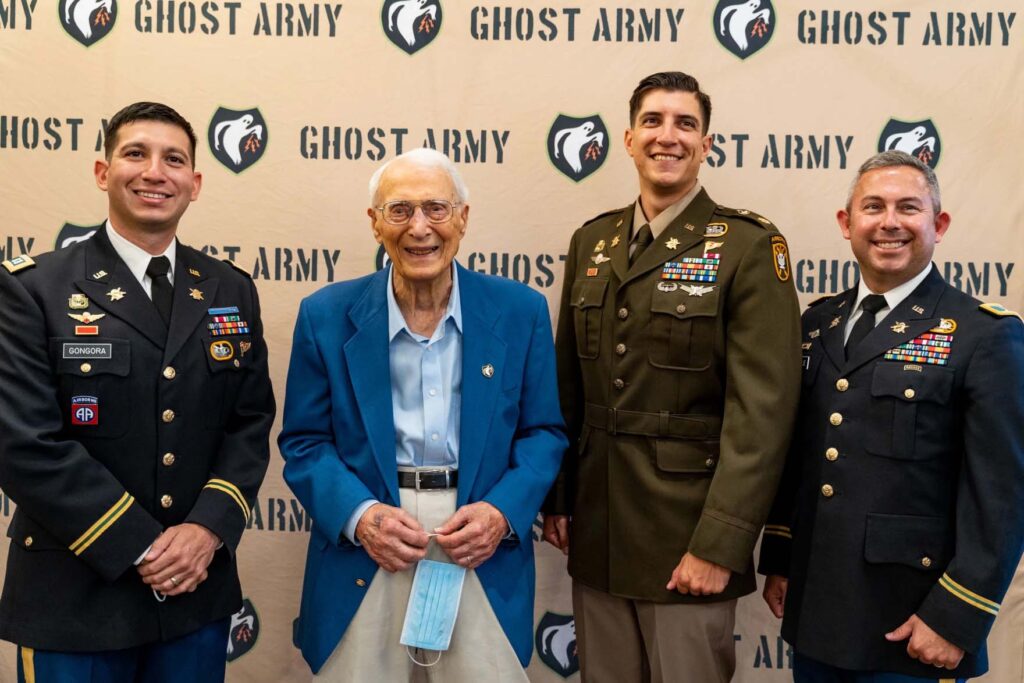
World War II “Ghost Army” veteran George Dramis of Raleigh poses with members of the modern day Army psychological operations unit in 2022.
Ghost Army Legacy Project
For the visual deception – those inflatable rubber props – the keen aesthetic abilities of Blass, Kelly, and other artists were put to work.
For audio, Dramis remembers the hulking truck-mounted 500-pound speakers used to blast recordings of the sounds made by major units – including tanks and cursing sergeants – up to 15 miles. It was an early use of multi-channel audio mixing, with the sound of each specific element — say, trucks going over a bridge — recorded separately, then pieced together with other elements in a custom mix for each mission.
And then there was Dramis’ job: sending fake radio transmissions. German intelligence relied heavily on intercepting American radio traffic. So Ghost Army radio operators had to mimic the type and quantity of traffic that was typical of the units they were impersonating. They even used soldiers’ names to fake personal news.
“Things like so-and-so got another stripe today, (so he’s now) Sergeant so-and-so,” Dramis said.
The sophistication of the radio deception didn’t stop there. The radio transmissions he sent were in Morse code – that mix of dots and dashes that represents words. Experienced radio operators can often identify each other by their so-called “fist” – their style of hitting the key. So the Ghost Army operators had to learn the fists of operators they impersonated.
“It wasn’t hard. Most guys were choppers with the hand key,” Dramis said, meaning they didn’t bend their wrists to smooth the motion of pressing the key.
All of this — the visuals, the sound, the radio signals — was orchestrated carefully to create one comprehensive deceptive impression.
“So they are basically inventing their mission as they go along with it, figuring out how to do it, figuring out how to fool the Germans,” said Rick Beyer, who directed a PBS documentary and co-authored the book, The Ghost Army of World War II. “But once they’re on the ground, they realize that there’s a fourth dimension of deception that they should be carrying out.”
They dubbed their fourth dimension of film-flam “Special Effects.”
“And in that one, they are physically impersonating the soldiers in the unit that they’re impersonating in a deception,” Beyer said. “So they’re putting on phony patches, they’re painting on phony markings on their trucks as they drive back and forth through the town. They’re setting up phony headquarters. They have some lieutenant or some captain who’s portraying a colonel or a general in order to fool any enemy spies that are left behind.”
Sometimes special effects duty was especially demanding, Beyer said.
“In one deception, the officer and his sergeant went into 19 bars and basically had a drink at each one and announced that they were MPs, and they were shutting these down, because the 6th Armored Division was coming through,” he said.
“They said that by the end of the evening, they might have been pretty drunk, but that every single person in the town of Rennes (France) believed that the 6th Armored Division was coming in because of what they’ve done.”
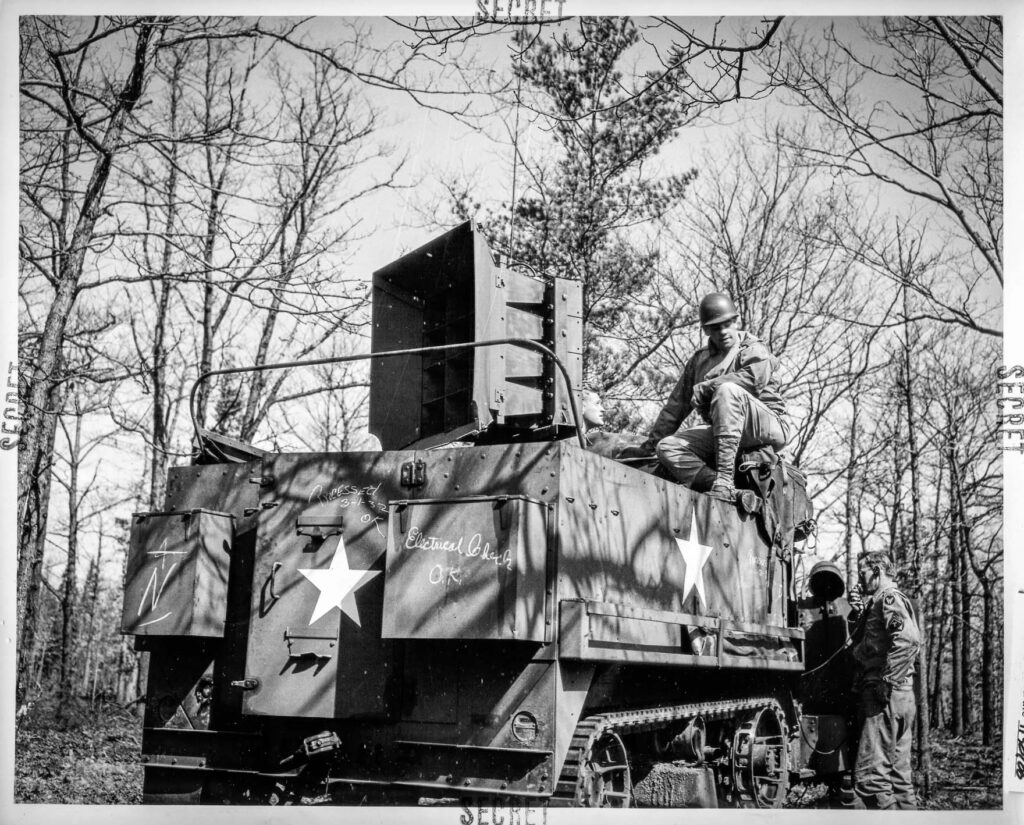
Soldiers from the U.S. Army tactical deception unit control a loudspeaker during World War II. The “Ghost Army” blasted sound effects of equipment, marching troops, and other audio recordings to deceive the German military.
Ghost Army Legacy Project
The unit landed in France in June 1944, just after D-Day, and staged 22 of its carefully-choreographed deception operations as it moved through Europe, almost like a touring dramatic production.
But while the Ghost Army’s job may sound like a romp, it also was dangerous.
After all, if their trickery worked, the combat con men made themselves targets. And if it didn’t work, the German units could have easily overrun them. They had no weapons larger than .50-caliber machine guns, and rubber tanks and rubber artillery aren’t much of a defense.
The culmination of the Ghost Army’s work, its masterpiece, was impersonating two full divisions of the 9th Army so those units could sneak over the Rhine River into Germany’s industrial heart. It was 1,100 men trying to seem like 30,000.
The soldiers set up hundreds of inflatable tanks, ran the loud recordings for multiple nights, and set up several phony headquarters.
“They are doing everything they can to attract German attention to the south,” Beyer said. “They even set up phony airfields.”
“At one point, they had a real spotter plane from another division land on one of their fields by accident, and they very unceremoniously said, ‘Get the hell out of here, right now.'”
The operation was a success, with the units the Ghost Army freed up for the attack suffering only tiny numbers of casualties.
The Ghost Army got a commendation letter for that, but it doesn’t really say what they did. The unit was a secret then, and for decades longer. Its exploits were classified, and the men were told not to tell anyone it.
“They said we may have to do this again, so we don’t want to give it away. Keep it secret,” said Dramis.
And so the Ghost Army vanished in a new way, and for decades.
“Ironically, because it was so deeply classified, the Army basically lost it. It kind of forgot about it until the late 80s, when they suddenly rediscovered this and started bringing Ghost Army soldiers to the Pentagon for briefings,” Beyer said.
Burley, the retired psychological operations general, says modern PSYOP units, as they’re called, still use the comprehensive approach the Ghost Army developed, layering effects so the deception is more believable. Today, their tactics include social media disinformation and technology to fool the modern electronic detection systems used by enemies.


